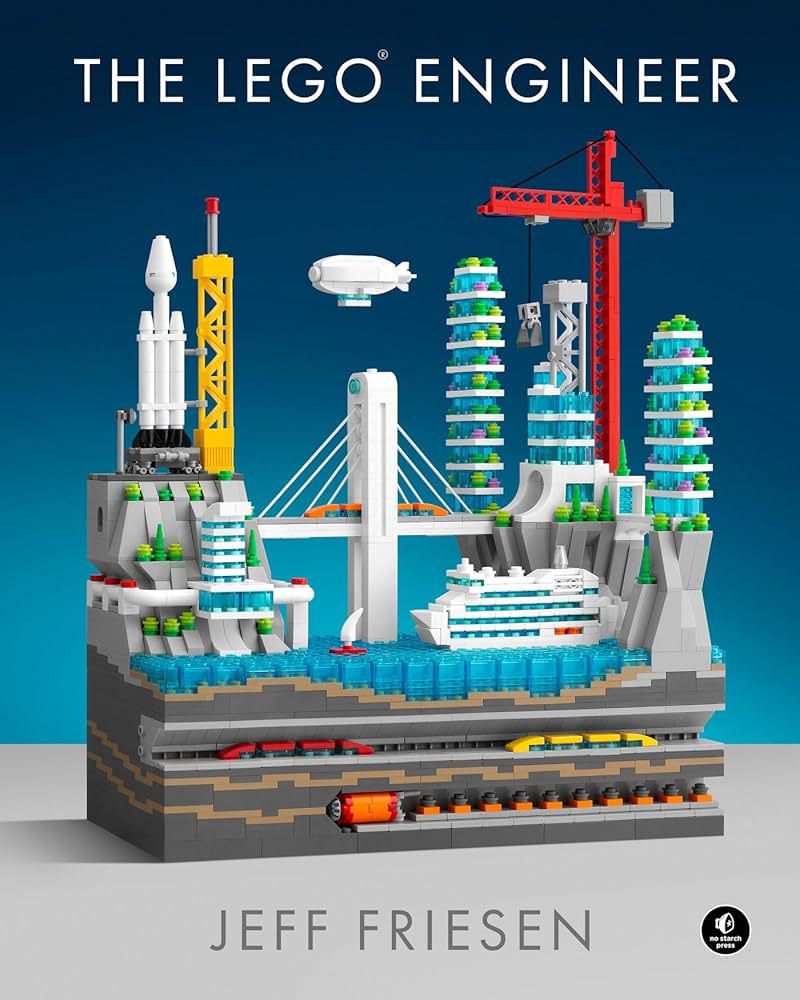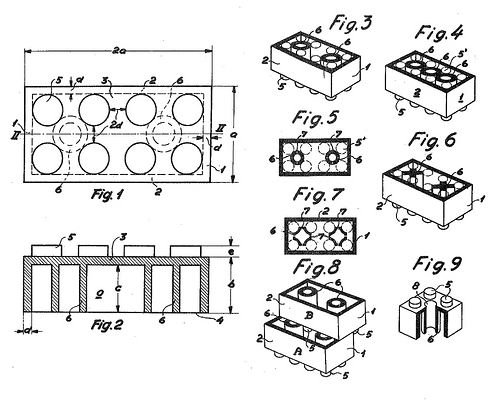Few toys have captured the imagination of generations quite like LEGO®. What began as a small Danish company’s venture into wooden toys in the 1930s transformed into one of the most iconic and beloved building systems in history. In 1958, the modern LEGO® brick was patented, introducing an interlocking system that allowed for limitless creativity and construction. Over the decades, LEGO® has expanded beyond simple bricks, incorporating robotics, architecture, and even real-world engineering principles – making it a staple in both childhood playrooms and professional design studios.
But LEGO® isn’t just for kids. The fascination with these small, colorful bricks extends to adults, engineers, artists, and educators alike. From intricate cityscapes to working mechanical models, LEGO® serves as both a creative outlet and an educational tool, encouraging problem-solving, spatial reasoning, and hands-on learning. The act of “playing” with LEGO® fosters patience, perseverance, and the ability to see failure as a step toward success—valuable lessons in any field, especially engineering.
This brings us to The LEGO® Engineer, a book that dives into the real-world applications of LEGO® as a tool for understanding complex engineering concepts. Whether you’re a lifelong LEGO® enthusiast (like our entire family!) or someone curious about the mechanics behind structures and machines, this book explores how LEGO® models can demonstrate principles of physics, architecture, and design in an accessible, engaging way. Take a closer look at The LEGO® Engineer, its key insights, and what it can teach us about the intersection of creativity and engineering.
In The LEGO® Engineer, you’ll explore how some of humanity’s greatest feats of engineering work, from towering skyscrapers to powerful rockets to speeding bullet trains. Then follow step-by-step instructions to build these marvels with LEGO® bricks as you experience the world of engineering in a fun new way.
How do diesel and electric engines work together to drive massive freight trains? How does a container ship’s bow shape contribute to its fuel efficiency? How do cable-stayed bridges distribute weight differently than suspension bridges? You’ll learn the answers to these engineering questions and more as you build your way through over 30 models, all designed by LEGO® expert Jeff Friesen. Understanding the engineering principles behind these structures will not only help you better appreciate the world around you, but will also help you make your own LEGO® builds more realistic.
The LEGO® Engineer by Jeff Friesen is an engaging and visually captivating exploration of engineering principles through the lens of LEGO® building. Friesen, a renowned LEGO® artist and photographer, takes readers on a journey through real-world engineering marvels, breaking down complex mechanical and structural concepts into stunning LEGO® models. The book features step-by-step instructions for building a variety of engineering-inspired LEGO® creations, from bridges and skyscrapers to locomotives and futuristic vehicles. Each model is accompanied by explanations of the engineering principles that make these structures work in real life, making the book an educational resource as well as an inspiration for builders of all ages.
Divided into sections based on different fields of engineering – including civil, mechanical, and aerospace engineering – The LEGO® Engineer blends creativity with technical insight. Whether showcasing the suspension systems of trains or the aerodynamics of high-speed transport, the book presents each topic with clear visuals and concise, engaging explanations.
The LEGO® Engineer is a fantastic addition to the world of LEGO® books, especially for those interested in the intersection of creativity and STEM (Science, Technology, Engineering, and Mathematics). Friesen masterfully balances fun and education, making engineering concepts accessible to LEGO® enthusiasts, students, and even professional engineers looking for a unique way to visualize mechanics.
Here are a few things that stand out in the book:
- Stunning Visuals: The photography in this book is exceptional, making it a pleasure to browse even if you don’t plan to build every model.
- Clear Explanations: Engineering principles are broken down in an easy-to-understand manner, making the book suitable for beginners while still offering depth for more advanced readers.
- Step-by-Step Instructions: The book includes detailed guides for building various LEGO® models, encouraging hands-on learning.
- Inspiration for Creativity: Even beyond the provided models, the book sparks ideas for custom LEGO® creations based on real-world engineering challenges.
A couple of items that only the nerdiest LEGO® builder might take issue with:
- Limited to Smaller Builds: While the models are impressive, they are relatively small in scale. Readers looking for large, intricate builds may need to expand on Friesen’s concepts themselves.
- Not a Deep Engineering Textbook: While the explanations are insightful, this book is more of an introduction to engineering principles rather than an in-depth technical guide.
The LEGO® Engineer is a must-read for LEGO® fans, aspiring engineers, and educators looking to make STEM topics more engaging. Jeff Friesen has crafted a book that is both visually stunning and intellectually stimulating, proving that LEGO® is much more than a toy – it’s a tool for learning, innovation, and creativity. Whether you’re a seasoned builder or a newcomer looking to expand your skills, this book is an inspiring addition to any LEGO® library.
For Baby Boomers who grew up with simple LEGO® brick sets (like me), Gen Xers who marveled at the first themed sets and minifigures, and Millennials who witnessed the rise of LEGO® Technic, Mindstorms, and epic licensed collections (our four kids and their spouses), LEGO® has been a constant source of creativity and connection across generations. Now, as Gen Z and Generation Alpha (our 11 grandchildren) discover the endless possibilities of LEGO® play, families have the opportunity to share not just a toy, but a legacy of imagination, problem-solving, and innovation.
The LEGO® Engineer is a testament to this enduring magic – bridging the past, present, and future by showing how something as simple as interlocking plastic bricks can teach complex engineering concepts, fuel curiosity, and bring generations together in the shared joy of building. Whether you’re revisiting LEGO® as an adult or introducing your grandchildren to its wonders, this book serves as a reminder that LEGO® is more than just a pastime – it’s a gateway to creativity, learning, and lifelong discovery.
Part of a regular series on 27gen, entitled Wednesday Weekly Reader.
During my elementary school years one of the things I looked forward to the most was the delivery of “My Weekly Reader,” a weekly educational magazine designed for children and containing news-based current events.
It became a regular part of my love for reading, and helped develop my curiosity about the world around us.












